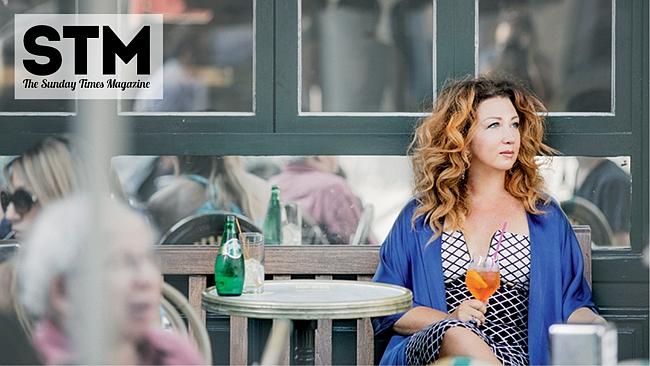Step out in Porto
OBSESSED with Lisbon and the Algarve, visitors to Portugal are missing out on the richly textured northern city of Porto.
IT'S A story straight out of The Da Vinci Code: Isabel Maria Fernandes, director of the Alberto Sampaio Museum in Guimares, one day was repositioning a small silver chest dating from the 10th century.
She and her colleagues had believed it to be empty but it seemed oddly weighty, so she decided to have a look.
Inside she found 80 carefully wrapped relics accompanied by a papal certificate of verification. Among them were snippets of vestments apparently worn by Jesus and the Virgin Mary.
"Of course, we don't know if they're real or not," Fernandes said modestly, as jaws hit the floor around her.
Her museum primarily is concerned with scientifically dating the chest. But after that, who knows?
Strolling around Guimares, I couldn't help but notice a broader, writer-friendly parallel to her story. Obsessed with Lisbon and the Algarve, visitors to Portugal have traditionally ignored the north. Porto, the hub from which pilgrimages such as this are made, is merely the country's fourth-most-popular attraction.
"Coimbra studies, Braga prays, Lisbon shows off and Porto works" is the cliche.
After industry, port wine and European Cup-winning football coach Jose Mourinho, locals are known as tripeiros, or tripe-eaters, after a 1415 episode in which they donated their meat to an Africa-bound explorer, keeping only the viscera for themselves.
Porto seems stuffy. But like that chest, it has its secrets. Viewed from a boat on the River Douro, a pink sunset skims the hillside houses that tumble from cathedral to water's edge.
The Ribeira, a UNESCO World Heritage site, is Porto's hot tourist spot: "The beautiful chaos of the roofs, the stubborn balances of the buildings perched in the scarps, in a difficult rivalry of colours and of `peeping the river'," gushes the City of Culture guidebook.
Teetering houses appear sewn into the city's 14th-century walls and the characteristic blue-and-white tiles adorning taverns, shops and churches are at once artful and fragile.
The tiles quickly become signature. In the So Bento Railway Station, they depict scenes from Portuguese history, including battles, conquests and horse chestnuts roasted in stoves still casting their wintry aromas today.
Porto functions on two tiers – the Ribeira and historic centre and, above them, peering down from granite hills, the modern metropolis. As with all cities, the fun lies in watching eras converse.
Snazzy shopping centres open until midnight are one thing. Tiny stores selling wax breasts, arms and intestines to be offered for intercession at Porto's myriad churches and cloisters are another. Other sights include a 12th-century Romanesque cathedral, its overcooked altar smothered in Brazilian gold leaf, Nicolau Nasoni's Baroque Clerigos Tower and Cadeia da Relao, a prison whose thick walls and barred windows now house a photography gallery. All are within walking distance if your calves are chipper; buses and cabs are cheap if hill-walking isn't your idea of a holiday.
Although crumbling since long before the Salazar dictatorship fell in 1974, Porto's stint as European Capital of Culture in 2001 provided the impetus for a fruitful program of restoration.
Its hard granite broke as many deadlines as drill bits, but a richly textured city is emerging from the chrysalis of construction, encouraging Portans further in their Lisbon-bashing.
Today's Porto is 3000 years old, but navigable by a spotlessly clean metro. Its airport is equally as spotless. Libraries, museums, theatres and a concert hall have been slotted into the cityscape.
Its docks are undergoing a personality change. Glitzy bars line the waterfront at Villa Nova de Gaia.
Arguably the two centrepieces of Porto's 21st century renaissance, and certainly the central architects, are Alvaro Siza Viera's Fundao de Serralves and Rem Koolhaas's Casa da Musica.
The former, a contemporary art museum set in 20ha of parkland, is praised for drawing crowds that don't normally visit museums. It's an adaptable space, rendered in sleek lines and mounting a probing and eclectic, if ultimately uneven, exhibition program.
The Casa da Musica, a concert hall shooting for the Guggenheim effect, is a distorted cube that allows visitors to watch musicians rehearse and, when I visited, was crammed with kids coming to watch Noddy.
Of course, Porto's exuberance is tempered by broader economic woes and a nostalgic, if complicated, sense that the glory days of maritime empire are gone.
In Porto, Villa Nova de Gaia is home to dozens of port warehouses, almost all of which offer tours and tastings. I visited Ramos Pintos, a brand founded in 1880 for export to Brazil.
Very much the Benetton of its day in marketing terms, the company's ads are awash with naked ladies, suggestive poses and black men dancing with white women, all for a little nectar.
Our guide listened politely as I regaled her with tales of port bastardised with sugar and cloves, before outlining the fermentation process unique to the Douro Valley.
Port is basically wine fortified with brandy, it emerges. Marketed in white, tawny and ruby variations, enthusiasts can tickle their palates not only here in the cellars, but throughout the valley, using converted manors as staging posts.
Heating it and adding cloves is clearly an act of barbarism akin to drinking draught stout before it has settled.
Port goes surprisingly well with food – and gastronomes, it should be said, won't lose weight in its home town.
Salted cod hangs all over Porto and the seafood is super-fresh. Sardines, octopus and shellfish are best enjoyed with vinho verde, a local light white wine, at the coastal village of Matosinhos.
Carnivores, too, will do a lot worse than the black pork at Cafe na on Rua do Padro.
"We have a richer gastronomy here in the north and we eat more," quipped one local, fatigued after a multitude of fish courses at Matosinhos.
Strolling Porto's hilly Baixa, or downtown area, is the best boot camp for working off leisurely lunches and dinners. And having had my fill of formal attractions, I went back for cafes, markets and hidden nooks.
"People in here are very frontal," explained a female colleague, leading me into Bolho farmers' market, where rotund old ladies buy and sell meats, breads, flowers and fruit under the watchful eye of Our Lady of the Immaculate Conception. "And they also use the rudest language in Portugal."
On cue, a mischievous wag suggested we were lovers, turning cheeks all round a vintage ruby.
Nearby, Cafe Majestic is the sort of cove among whose leather chairs and congenital waiters you imagine new philosophies are being parsed.
Or perhaps just crosswords – although this Belle Epoque beauty famously has resisted change since it opened in 1921.
Similar is the neo-Gothic bookshop, Livraria Lello, on Rua des Carmelitas. An Art Nouveau staircase here whooshes skywards like a ball gown, transporting visitors into a tiny cafe upstairs.
It is exceptionally pretty, bathed in a filtered light that "without imposing, always forces us to speak in a low voice", according to the architect who restored it.
Porto is certainly a treasure chest, and its marketers are eager to tack on day-trips ranging from adventure sports to golf, Douro vineyards and beaches, and historical attractions like the pilgrimage site of Bom Jesus do Monte in Braga, and of course, Isabel Maria Fernandes' bizarre reliquary in Guimares.
If only it were as easy to get here in the first place.
Direct flights from London are expanding, but for the moment, layovers in Lisbon may be necessary, making for an awkward city break. The train from Lisbon takes three hours, so perhaps combining the two is the answer.
Not that the tripeiros would approve; though they'll humour you either way.
"Porto likes to laugh and to laugh with certain insolence," as poet Vasco Graa Moura has said, "laughing more shamelessly, more primarily, more soundly and with more pleasure than Lisbon."



